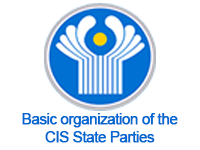SCIENTIFIC RESEARCH CARRIED OUT IN THE LABORATORY
The employees of the laboratory of quantum electronics are carry out research on theoretical understanding and practical use of ways to optimize the technological mode of obtaining new nanoporous structures, by anodic electrochemical processing of the semiconductor crystals, with the aim of creating highly efficient LEDs, injecting lasers, sensors and solar converters based on them. An anodic electrochemical treatment of the semiconductor crystals leads to the formation of microporous structures, which will significantly change the electrical and radiating characteristics of the respective quantum instruments.
Using as an example the phosphide indium and gallium arsenide crystals, which are effective materials for the semiconductor electronics, it was found that as the degree of porosity in the surface structure of these compounds will increase, their optical width of the prohibited zone noticeably increases and the mobility of the charge carriers drops sharply. This makes it possible to expand the spectral range of fluorescent electronics and on this basis to create LEDs and lasers with improved characteristics. Here we are talking about changing the spatial limitation of charge carriers in all dimensions associated with dimensional quantization in semiconductors, where the modification of electronic properties of working material is clearly expressed.
In addition, the final electronic parameters of the working material, which determine by the time of the radial recombination, by the time of energy relaxation and the Oje-recombination between the electronic sub-levels, also depend heavily on geometric size of quantum dots, the number of which depends on the degree of porosity of the semiconductor base. In the case of laser diodes, these microscopic changes occur mainly as a result of the generation of the second harmonica due to a strong own electric field of coherent radiation inside them and the imposition of additional luminescence due to the artificially created micropores.
This is also facilitated by the increase of the high absorption rate in the studied semiconductors with photon energy, which is approximately double the width of the prohibited zone. The second harmonica should occur in a p-n transition in a layer about 100 Ǻ thick, adjacent directly to the resonator mirror. That is, in laser diodes from the mirror of the resonator, covered with a layer of nanoporous material, there is a broadband spontaneous radiation consisting of the overlay of the strips of own radiation p-n transition, the second harmonica of the p-n transition radiation with length waves in a maximum of about 450 nm and additional photoluminescence of a modified semiconductor crystal. As a result, laser radiation with a significantly higher generation threshold will emitted from the opposite mirror. Thus, the phenomenon of the emergence or artificial creation of nanostructures allows creating a basis for the development of a new technology for obtaining semiconductor materials for the next generation of opto and microelectronics.




The experimental base of the laboratory consists of various spectral instruments for the study of luminescence and mass spectrometers for qualitative and quantitative analysis of the elemental composition of the objects.
SCIENTIFIC COMMUNICATIONS
Laboratory of quantum electronics cooperates with scientists of Russia (FIAN of the Russian Federation, Moscow; St.-Petersburgs University, F.M.Dostoyevsky University in Omsk, S.P. Korolev University in Samara, Moscow State University, Yekaterinburg State University) and supports scientific links with distant countries abroad.


